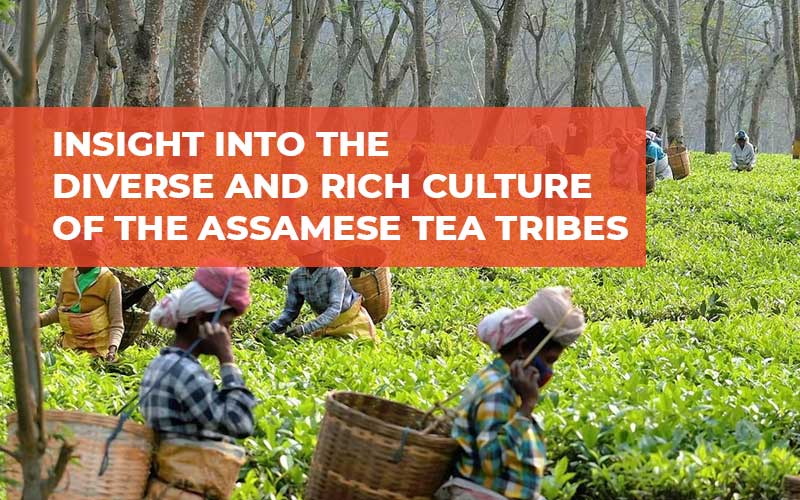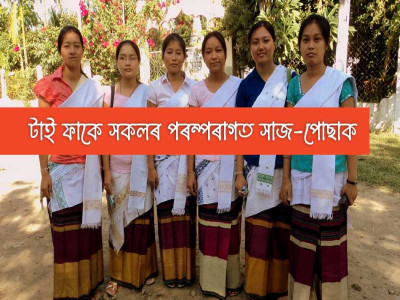
Insight into the diverse and rich culture of the Assamese tea tribes
The state of Assam is
known for its scenic beauty and lush green tea plantations. Thousands of people
in the state have been employed by the tea industry, which has been one of the
main contributors to the state's economy. An integral part of this industry is
the tea tribes of Assam, who have played a major role in its development.
The Tea Tribes of Assam
are a group of people who were brought to the state by the British colonial
administration from various parts of India, mainly from the present-day states
of Bihar, Jharkhand, and Odisha, to work in the tea plantations. The term
"Tea Tribes" refers to the different tribal and non-tribal
communities who were brought to Assam for this purpose.
The Tea Tribes comprise
several sub-communities, including the Adivasis, Santhals, Oraons, Mundas,
Kharias, and others. The Tea Tribes have a rich and vibrant culture, which is
reflected in their music, dance, food, and traditional attire.Throughout their
generations, their culture has evolved and is a blend of their indigenous
traditions and the cultural practices of the regions from which they were
brought.
Music and dance are an
integral part of the Tea Tribes' culture. They have a rich tradition of folk
music, which is characterized by the use of traditional instruments like the
dhol, flute, and mandar (maadal). The Tea Tribes have several folk dances, each
with its own unique style and steps. Some of the popular dances include the
Jhumur, Santhal, and Oraon.
They have a unique
cuisine, which reflects their diverse cultural roots. The cuisine is
characterized by the use of local ingredients like rice, fish, meat, and
vegetables. The Tea Tribes also have their own indigenous alcoholic beverage,
known as handia (/haria), which is made from rice and fermented in earthen
pots.
There is a distinctive
style of clothing that reflects the cultural roots of the Tea Tribes, which is
colorful.The women wear a saree and a blouse, while the
men wear a lungi and a shirt. They also wear traditional jewelry like bangles,
necklaces, and earrings, which are made from silver, beads, shells, and other
materials.
Religion plays a significant
role in the Tea Tribes' culture, and they follow different faiths like
Hinduism, Christianity, and tribal religions. They have their own traditional
beliefs and practices, which are deeply rooted in their indigenous traditions.
In addition to traditional
storytelling, the Tea Tribes have several folk tales and legends that have been
passed down from generation to generation.These stories reflect their cultural
heritage and offer insights into their indigenous beliefs and practices.
The Tea Tribes of Assam
have a rich and diverse culture, which is a blend of their indigenous
traditions and the cultural practices of the regions from where they were
brought to Assam. Their culture is reflected in their music, dance, food, and
traditional attire, and is an integral part of the state's cultural heritage.
By recognizing and promoting their culture, we can ensure that the Tea Tribes
are given the respect and dignity that they deserve as citizens of India.
However, the Tea Tribes
have also faced several challenges over the years. They have been subjected to
exploitation and discrimination by the tea garden owners, who have often denied
them basic rights like education, healthcare, and adequate living conditions.
The Tea Tribes have also been victims of social exclusion and have been treated
as second-class citizens.
Various government and
civil society organizations have been working to improve the living conditions
and overall welfare of the Tea Tribes in recent years.Education and skill
development programs are among the basic amenities that are being provided,
such as housing, sanitation, and healthcare.Furthermore, initiatives have been
implemented to promote the participation of women from the Tea Tribes in
decision-making processes.
Disclaimer: The opinions expressed in this article are those of the author's. They do not purport to reflect the opinions or views of The Critical Script or its editor.

Newsletter!!!
Subscribe to our weekly Newsletter and stay tuned.

















Related Comments